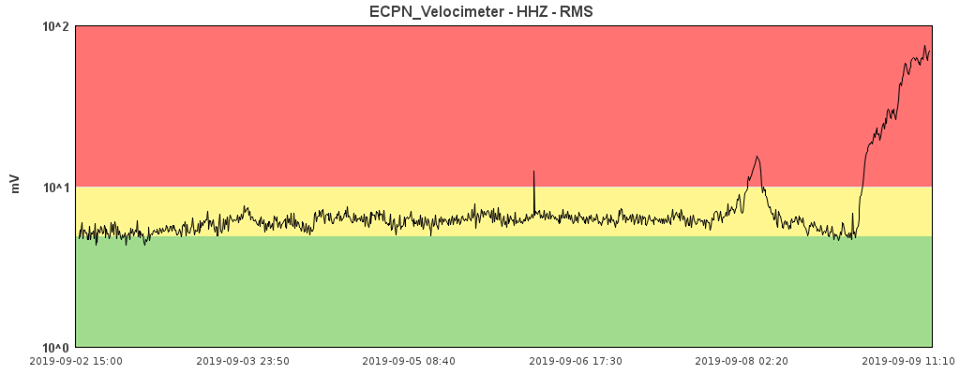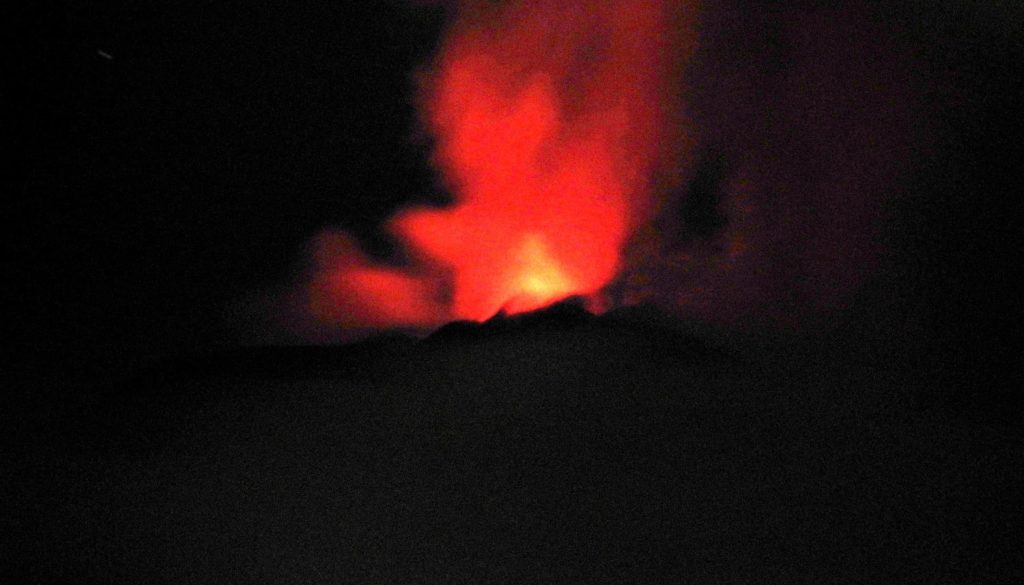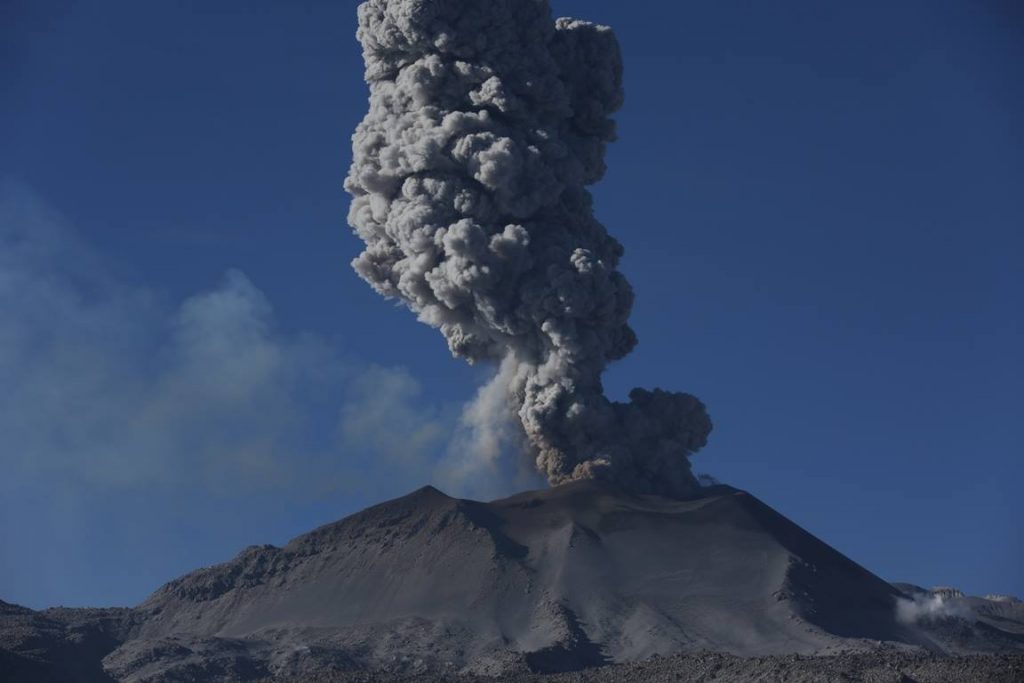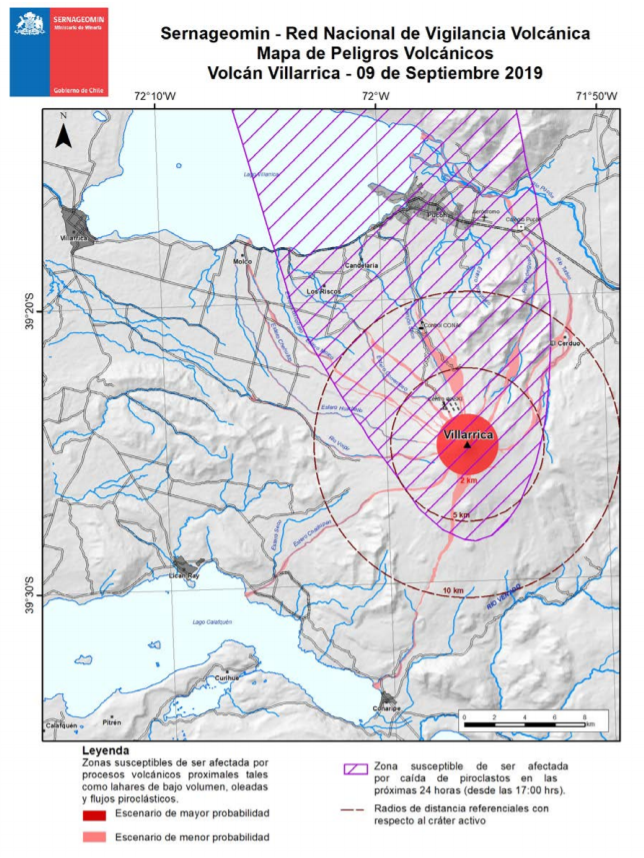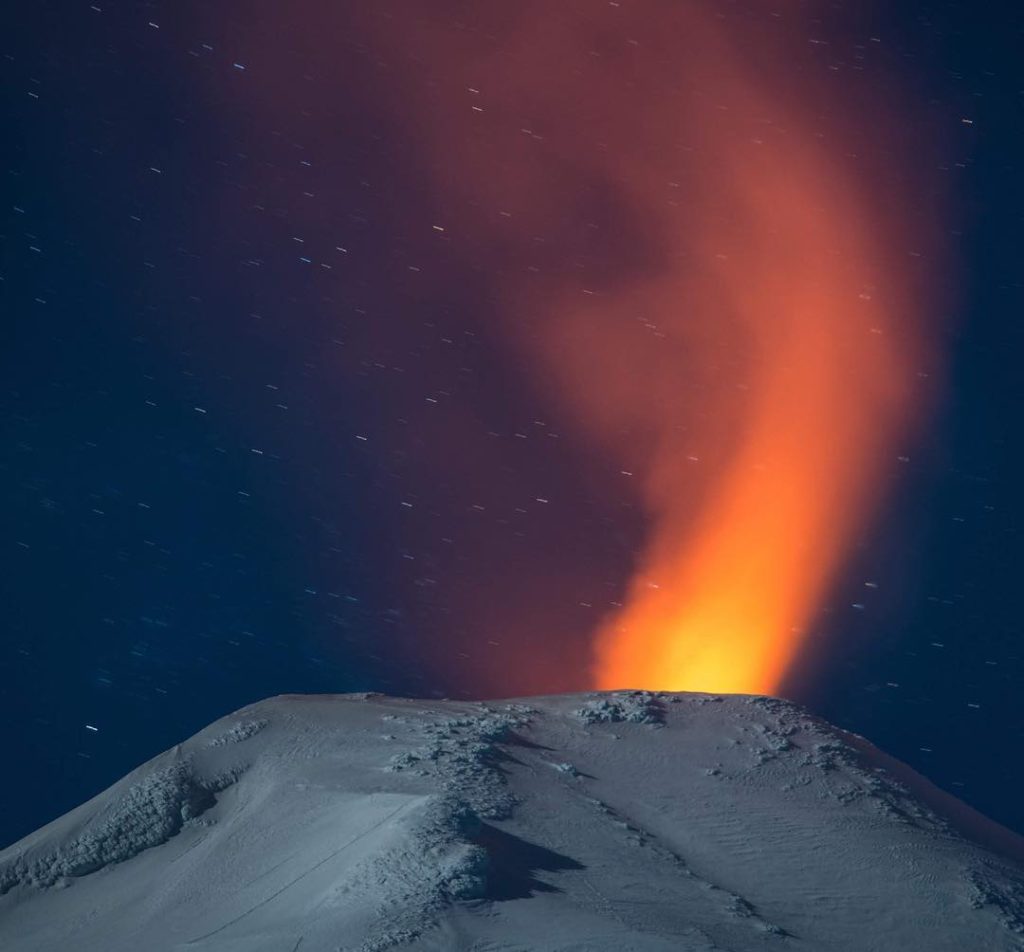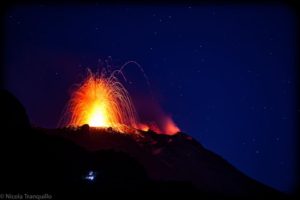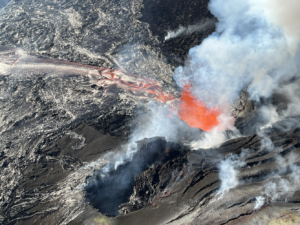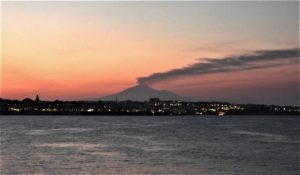September 10 , 2019.
Italy / Sicily , Etna :
COMMUNICATION on the volcanic activity of 09 September 2019, 15:30:00 (UTC) – ETNA.
The Osservatorio Etneo, from the National Institute of Geophysics and Volcanology, reports that the strombolian activity of the Northeast crater persists, resulting in diluted ash emissions that disperse into the atmosphere near the summit.
The amplitude of volcanic tremor remains at a high level; moreover, it should be noted that from 08:50 UTC, it recorded a new increase compared to what had been previously communicated (Etna Press Release Update 8). The location of the volcanic tremor springs is located under the northeast crater at an altitude of about 3,000 m. The sources of infrasonic signals continue to be located in the same crater.
The inclinometer network of Etna shows modest changes, especially at the resorts of Punta Lucia and Pizzi Deneri. In addition, the tilt signal has a noise typically associated with high tremor phases. The GPS network does not show substantial variations.
The flow of SO2 measured through the FLAME network indicated at 15:25 UTC an average daily value of 4,800 t / d, which placed the degassing at a level average / below the attention threshold of 5,000 t / d. In detail, intraday data showed great variability with flow transients reaching maxima of up to 11 650 t / d, indicating a high level of degassing.
Source : INGV Vulcani.
Peru , Ubinas :
Period of analysis: September 3 to 9, 2019. Arequipa, September 9, 2019
Alert level: ORANGE
The Geophysical Institute of Peru (IGP) reports that the Ubinas volcano continues its eruptive process. Last week, he presented an explosive activity with the expulsion of rock fragments and ashes. To date, it continues to record a seismic activity that is associated with the rise of magma inside the volcano, in addition to emissions of blue gas (of magmatic origin) and water vapor observed using surveillance cameras. According to this scenario, explosive activity and / or ash emissions are expected in the coming days.
The IGP recorded and analyzed a total of 2858 seismic events associated with the eruptive process of the Ubinas volcano, the majority related to seismic fracturing (VT) with an average value of 223 events per day, all with magnitudes less than M2.2 . During the last 48 hours, the recording of seismic events that would be associated with a possible rise of magma (hybrids) is maintained. During this period, 3 volcanic explosions generated eruptive columns of less than 2500 m. The largest of these explosions occurred on September 3 at 1:58 pm (local time), resulting in the expulsion of rock fragments and large volumes of ash and gas that affected several districts in the Moquegua area. south and south-east of the volcano.
Après ces événements, les caméras de surveillance ont enregistré des émissions continues de gaz bleus (d’origine magmatique) et de vapeur d’eau d’une hauteur inférieure à 1 000 mètres au-dessus du sommet du volcan. La surveillance de la déformation de la structure volcanique, à l’aide de données GNSS (traitées avec des orbites rapides), a montré une tendance négative de la composante verticale, ce qui suggère une déflation du système volcanique éventuellement associée à des processus de dégazage observés sur le volcan ces 4 derniers jours La surveillance par satellite MIROVA n’a pas révélé d’anomalies thermiques significatives (toutes inférieures à 1 MW).
RECOMMANDATIONS:
• Maintenir le niveau d’alerte volcanique orange.
• Ne vous approchez pas d’un rayon de moins de 10 km du cratère du volcan. Chaque ascension sur le volcan comporte un risque très élevé.
Source : IGP Peru.
Photo : ANDINA/Difusión
Peru , Sabancaya :
Period of analysis: September 2 to 8, 2019 .Arequipa, September 9, 2019.
Alert level: ORANGE
The Geophysical Institute of Peru (IGP) reports that the eruptive activity of the Sabancaya volcano has remained at moderate levels; that is to say with the occurrence of continuous explosions and the emission of ashes. Therefore, for the following days, no significant change is expected.
The analysis of the recordings obtained from the seismic network of the Sabancaya volcano for the period from 2 to 8 September 2019 has made it possible to identify the occurrence of about 2575 earthquakes of volcanic origin, mostly related to the movements of magmatic fluids. During this week, an average of 29 explosions per day of average to low intensity were observed.
The monitoring of the deformation of the volcanic structure, using GNSS data (processed with fast orbits), presents no significant anomalies. Visual surveillance, using surveillance cameras, identified the appearance of columns of gas and ash up to 1.5 km high at the top of the volcano, which were then dispersed to the southern and eastern sectors. Southeast of Sabancaya. Satellite monitoring identified 9 volcanic anomalies on the volcano ranging from 13 to 70 MW, associated with the presence of a hot body near the surface and the occurrence of explosions continuously.
RECOMMENDATIONS
• Maintain the orange volcanic alert level.
• Do not approach a radius of less than 12 km from the crater. In case of ash fall, cover your nose and mouth with damp cloths or masks. Keep the doors and windows of the houses closed.
Source : IGP Peru.
Photo : Auteur inconnu.
Chile , Villarica :
THE VILLARRICA VOLCANO IN ORANGE ALERT.
On the afternoon of Monday, September 9, the National Geology and Mining Service launched the technical alert for the Villarrica volcano at the Orange level. This is due to large variations in seismic activity, recording volcanic tremor signals, which are generally attributed to the presence of a shallower lava lake.
The SERNAGEOMIN stresses in the activity reports that the dynamics of the lava lake are fluctuating and that the situation could become a major eruptive event.
Given this, an exclusion zone of 2 km around the crater was planned, given the possibility of an activity similar to that of 2015, with ejection of pyroclastic material on the slopes of the volcano and generation of lahars (floods volcanic) of moderate magnitude (map attached).
The call is to prepare in case of eruption, knowing what are the evacuation protocols and safety zones.
The report of the Chilean organization based its decision on « a rapid increase of the RSAM (amplitude of the seismic signal) and a tendency which continues to increase, suggesting a greater instability of the volcanic system ».
« The seismicity of the recorded tremor type has high energy over short periods. This has been correlated with changes in surface activity due to the dynamics of the lava lake located in the active crater. It should be noted that the dynamics of the lava lake fluctuate and because of its location near the surface, it is possible, in the current context, the occurrence of minor explosions that can affect areas near the crater.
Orange alert surveillance for Villarrica, Pucón and Curarrehue municipalities in La Araucanía region and Panguipulli municipality in Los Ríos region for Villarrica volcano activity.
According to the latest REAV, it is reported that, in recent hours, monitoring stations near the Villarrica Volcano continue to record significant variations in seismic-volcanic activity, including acoustic signals, which have reached an approximate record of 50 events per hour, with a maximum value of 18 pascals reduced to one kilometer, a value considered high.
The conditions mentioned in the previous reports are conditioned by an overpressure of the system, probably due to a partial sealing of the lava lake surface housed in the crater, which may have weakened, manifested by the acoustic signals described. However, the same reported seismic behavior continues without significant decrease in activity.
It should be noted that the characteristics of the open channel, coupled with the persistent fluctuation of the lava lake and the current changes in the increase in the seismic amplitude of the continuous tremor and the appearance of acoustic signals, suggest an overpressure in the magmatic system, which is facilitated by partial obstructions within the main duct. This situation could evolve into a major eruptive event or relaxation of the volcanic system.
Sources : Volcanologie en Chile. Rionegro.com , Onemi .
Photo : Auteur inconnu.

